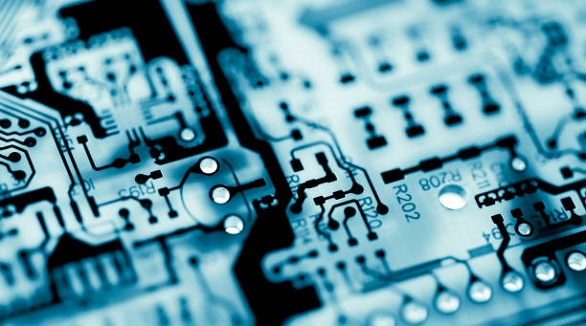What is a Backplane PCB?
Backplane PCBs provide critical connectivity, stability, and efficient communication in complex systems, essential in data centers, telecom, and industrial automation.
In the field of electronics, a backplane Printed Circuit Board, is a unique and highly developed piece. While in many instances a standard PCB may have only one function it will perform, the backplane PCB is specifically made for connectivity, stability, and communication between the different electronic parts and subsystems. These are normally at the back or bottom of electronic equipment and represent the most basic structure that is fundamental to complex systems, especially in telecommunications, data centers, and industrial automation.
Structure
Architecture-wise, the backplane PCB has higher layers and greater complexity than that of standard PCBs. To accommodate several connectors and slots, it has to be that way for connecting multiple daughter boards or expansion cards. This is how a backplane PCB manages the dense wiring pattern for multiple signal paths.
Intricate specifications, such as high-speed signal transmission, good power distribution, thermal management, and EMI/EMC considerations, are often considered during the development of backplane PCBs. These aspects assure the overall stability and dependability of the electrical devices they service. The configuration can range from single to multi-layer, depending on the devices' differing design requirements and functional difficulties.

Functions
Mechanical support: Mechanical stability is one of a backplane PCB's most important functions. It would offer a rigid base on which the electronic components can be mounted, playing an integral role in giving structural support to the device. This aspect is particularly crucial in environments needing periodic maintenance or updating of components because the robustness of the backplane absorbs most of the mechanical strain, hence minimizing it from the modules that are connected to it.
Electrical Connectivity: The backplane PCB develops a complex network in circuitry, which allows strong electrical interconnectivity between different units. This capability for networking is very important in connected subsystem operation, whether coordinated or otherwise, so that seamless data transmission and/or power supplies can be realized-so important for device functionality.
Signal Routing: Backplane PCBs are used for high-speed signal routing. They enable high transmission reliability and rapid communication among components in applications that demand quick data processing and transmission via a network, such as data centers and telecommunications infrastructures.
Power Distribution: Power distribution is also highly regulated; backplane PCBs balance load and consumption to ensure that power is shared among all components. This capacity is useful in maintaining efficient functioning and minimizing surges that might damage sensitive electronic equipment.
Thermal Management: Backplane PCBs are designed to be capable of thermal management. They offer an appropriate method of heat conduction, thereby spreading heat to avoid overheating, which may cause component failures. This kind of heat capacity results from a design made possible by key elements that enable spreading from the heat that is generated due to high-powered components.
EMI/EMC Control: One of the major design considerations of backplane PCBs is electromagnetic interference and electromagnetic compatibility. These considerations help minimize interference with external environments for stability and dependability of device operation amidst potential electromagnetic disturbances.
Features and Advantages
Scalability and Maintainability: Backplane PCBs usually follow a modular design philosophy with standardized interfaces; therefore, maintenance or repair of any part is pretty easy. It proves invaluable in industrial control systems where each malfunction implies some amount of downtimes, which should be minimized.
High Stability and Reliability: The backplane PCBs are fabricated using only high-quality materials combined with state-of-the-art manufacturing processes. For this reason, the backplane can easily perform optimally and with complete reliability in extremely harsh and exacting conditions, as would be expected from military applications where equipment may have to undergo the most stringent tests of validation.
Assemblability and Flexibility: Because the design allows backplane PCBs to be assembled without problems of integration and, at the same time, they can be integrated with varied components flexibly. Flexibility is something very important in the case of automation industrial systems when there are many sensors and actuators that must be integrated for complex control functions.
High-Density Capability: Advanced electronic gadgets impose requirements on high-speed data processing and fast transmissions. Backplane PCBs deal with the High-Density routing capability. These massive volumes of signals can be handled within limited space, which is a typical requirement in server architectures.
Integrated Functionality: Each backplane PCB is able to feature various functions and communication interfaces integrated to serve a wide range of operational needs in numerous devices. As such, for industrial control systems, backplanes with a communication interface that actuate functions find them quite useful for further monitoring and complexity in their operations.

In summary, backplane PCBs are something which today's technology cannot survive without. To emphasize the critical support and management of complex electronic environments adequate for the assurance of greater performance, stability, and reliability in advanced devices across diverse industries, the central management of connectivity and further assistance to modular design ensure operational efficiency and longevity for complex electronic systems, proving to be a key building block in the course of development and sophistication of modern technology.
Hot Tags:
Contact us

If you can't find what you're looking for, please contact us.
Article

Panelization combines multiple PCBs on one panel, boosting efficiency and cost-effectiveness in manufacturing by optimizing space and enabling automation.

Tab routing in PCB manufacturing boosts efficiency and quality, ideal for non-linear shapes, offering flexibility, support, and cost-effectiveness in production.

Backplane PCBs support functional boards, distribute power, and transmit signals. Increased IC complexity demands more layers and high performance, creating challenges in alignment, drilling, electroplating, ICD issues, and stub management. Tips include precise alignment control, advanced drilling and plating techniques, and maintaining stub lengths below 0.25mm for optimal signal quality.
